Solo Travellers
Renting a Camper Van for a Road Trip of Stargazing, Cook Outs, and Red Rock Hikes
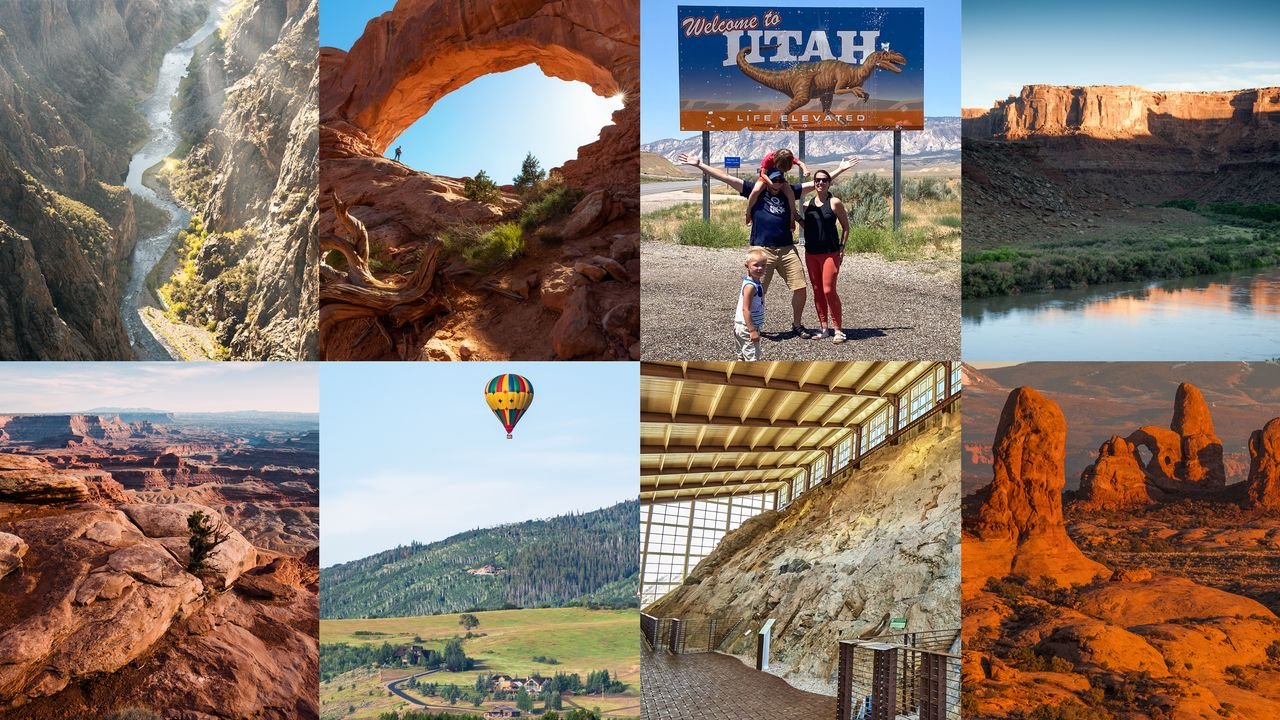
For Jo Piazza and Nick Aster, a camper van trip through the national parks of Colorado and Utah wasn’t just a summer escape—it was a way to reconnect with the adventures they loved pre-kids. “It was time for a trip out west,” Jo says. “We’d visited a lot of these national parks when we lived in San Francisco, but now it was about showing our kids—Charlie, 5, and Beatrix, 3—what makes these places so special.”
The couple, who live in Philadelphia and were expecting their third child at the time (Eliza, now born), mapped out a 10-day loop that started and ended in Denver. Along the way, they visited Rocky Mountain National Park, Steamboat Springs, Dinosaur National Monument, Moab, Arches, Canyonlands, Black Canyon of the Gunnison, and Breckenridge. “It was a bit of an epic romp,” Jo laughs. Here’s how they spent their family vacation—and how much it cost.
Why rent a camper van?
Pregnant, outdoorsy, and realistic about the physical demands of camping with two small kids, Jo knew she needed more than a tent. “Sleeping on the ground just wasn’t going to cut it,” she says. “A van gave me a good place to sleep—and full disclosure, Nick often slept out in the tent with the kids to give me a bit of luxury.”
They rented their “cabin camper” through Outdoorsy—a fully tricked-out truck with a massive cap in the back that felt like a log cabin on wheels. “People commented on it everywhere we went,” Jo says. “We’d get high fives, people asking to take pictures. At one point, someone said, ‘Hey man, we saw you in Canyonlands two days ago! That thing is awesome.”
Planning a flexible route around national parks
Unlike their usual meticulously planned vacations, this one was intentionally open-ended. “We had a general loop in mind,” Jo explains. “We knew we wanted to hit Rocky Mountain right away since it’s so close to the airport, and we knew Charlie would go bananas for Dinosaur. But the rest we figured out as we went. That’s the beauty of traveling by van—you don’t need to lock in hotels every night.”
This flexibility came in handy during a July heatwave in Moab. “We broke up the camping with a stay at the super-unhip Marriott,” Jo says. “It had a fake red rock pool and a mini water park. It flew in the face of the National Park ethos, but with 100-degree heat and two little kids, we just leaned in. They loved it.”
Top highlights for parents and kids
The kids’ favorite moments weren’t always the ones Jo and Nick would’ve picked, but they rolled with it. “They’re still talking about the pool in Moab and the fossil quarry at Dinosaur National Monument,” Jo says. “Also, they were weirdly into how much attention the van got.”
Solo Travellers
Are the world's most beautiful islands in danger?

The scenery and 24-hour sun on these Norwegian isles are no longer a secret
Source link
Solo Travellers
The Best Ear Protection for Kids to Wear at Concerts, Fireworks, and Sporting Events
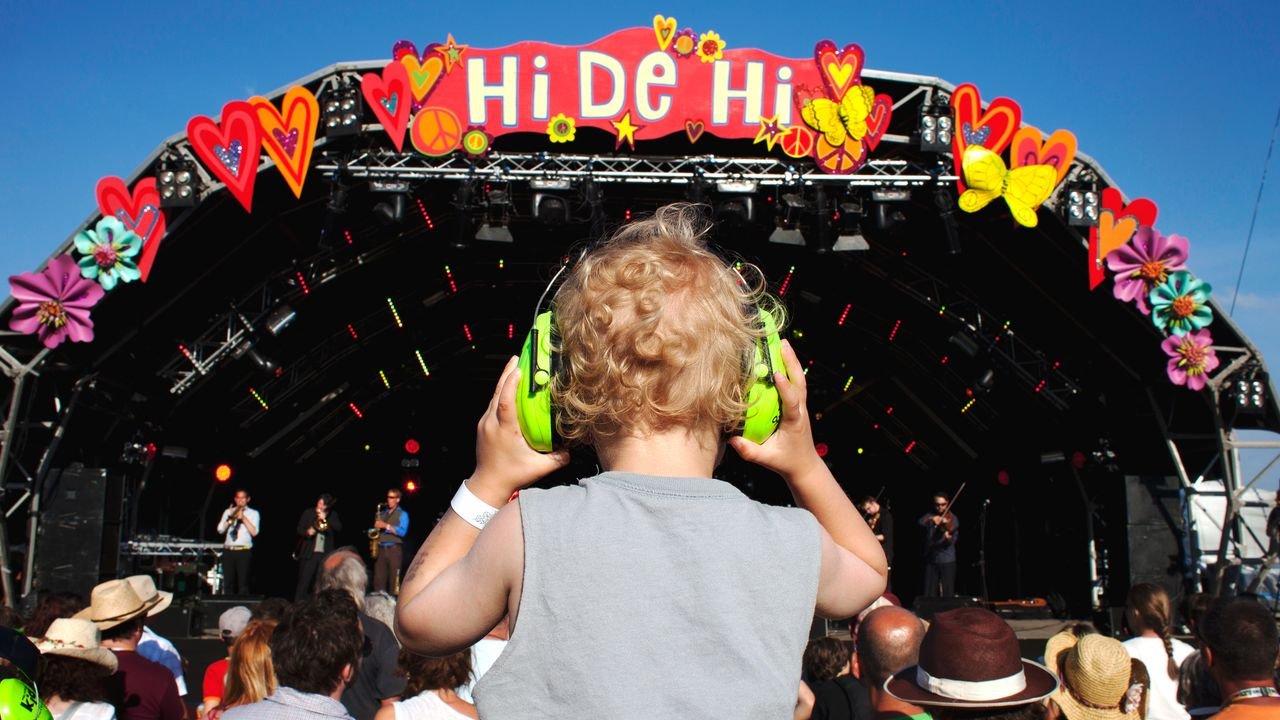
There’s a reason your child covers their ears every time you walk past a construction site. Little ears are sensitive—and they’re especially vulnerable in the presence of fireworks, race cars, and screaming Taylor Swift fans. According to the Centers for Disease Control and Prevention, prolonged exposure to noise above 85 decibels (dB)—the typical volume of a hair dryer—can cause permanent hearing damage, even for adults. Now imagine your child at a Fourth of July firework festival, where pyrotechnics displays can top 150 dB, and you understand why packing ear protection is just as crucial as sunscreen and snacks.
“Our ears are always on,” says Dr. Brian J. Fligor, a pediatric audiologist, author of Understanding Childhood Hearing Loss, and president of Tobias & Battite Hearing Wellness in Boston. “Hearing is crucial for our language development and navigation of the world. That’s why we must protect children’s hearing from birth.”
The good news? Today’s earmuffs—over-the-ear headsets that help block noise—are lightweight, comfortable, and stylish enough that most kids won’t put up a fight over wearing them. They’re also designed to lower the decibel level without muffling or distorting sound entirely. (The goal is volume reduction, not total silence.)
Dr. Fligor advises using protection any time an event is loud enough to startle a child or requires shouting in order to be heard. He also recommends it when riding ATVs, snowmobiles, or other powersport vehicles where engines are not particularly well-muffled. And while hearing protection is not necessary on commercial flights, he absolutely recommends muffs for smaller bush and prop planes, or when attending a jet flyover show. If you’re not sure how to gauge the noise risk in any given situation, there’s an app for that: Decibel X sound meter for iOS and Android offers a real-time frequency analyzer for spot checks.
We asked Dr. Fligor, a father of four, along with other travel-savvy parents about the muffs that work best for their kids and why. Below, the best kid-approved picks for the ultimate ear protection.
FAQ:
What should I look for to find the best ear protection for kids?
Aim for a minimum noise reduction rating (NRR) of 22 to 27 dB for general use, says Dr. Fligor. For especially loud environments—like fireworks shows or racing events—higher is better.
What ages need ear protection?
Exposure to loud noise—anything over 85 dB—can cause permanent hearing damage in children and adults alike, which is why it’s so essential to protect our hearing from birth onward. Proactive protection for kids is especially important because they are less likely to self-regulate and move away from noise if it gets too loud.
Which type of ear protection is better for kids: earplugs or earmuffs?
For babies, toddlers, and grade schoolers, over-the-ear muffs are the safest and easiest option. They’re more comfortable, stay in place better, and don’t pose a choking hazard the way earplugs might. Dr. Fligor advises against using earplugs for children until they are old enough to report accurately on their comfort and effectiveness, typically around age seven or older. For tweens and teens, high-fidelity earplugs like Loop or Etymotic work well because they dampen volume without distorting sound (ideal for concerts).
How can I tell if the ear protection fits correctly?
“Earmuffs should form a snug but gentle seal around the ears without any gapping,” says Dr. Fligor. That means the cups are large enough to fit around the entire ear— including the flap of cartilage around the edge, called the pinna—and sit along the jaw. If they slip forward or the ears poke out, it’s not tight enough. If they leave indentations or the child complains about pressure, it’s too tight. To double check the fit, ask your child to shake their head while wearing them: If the earmuffs shift easily or slide off, they’re too loose.
Solo Travellers
A pristine alternative to the Channel: long-distance swimming in Croatia | Swimming holidays

From the port of Stari Grad, one of the oldest towns in Europe, we slip into the water and begin swimming out of the harbour, past the church of Saint Jerome and around a pine-clad headland to a nearby bay on Hvar’s northern coast. We emerge like an amphibious invasion force – about 160 swimmers, making our way to the hotel pool bar where drinks await. So far, so civilised. But this is only a warm-up …
On 24 August 1875, Captain Matthew Webb became the first person to swim the Channel, slathered in animal fat to fend off the cold. At the time, it was heralded as a feat of near-superhuman endurance. One hundred and fifty years later, I signed up for a modern take on the 33.3km (21-mile) swim (the shortest distance across the Channel, although Webb was blown off course and ended up swimming something like 63km). This Croatian adaptation involves swimming between islands off the Dalmatian coast, is split across four days and includes a welcoming hotel (the three-star Places Hvar by Valamar) to recuperate in at the end of each day. And thankfully, neoprene has replaced tallow.
The trip is run by UltraSwim 33.3, a new company named after the Channel stretch, offering multiday swim challenges in spectacular locations – Croatia, Montenegro, Greece and Switzerland – with an emphasis on comfort and support.
“The Channel is the Everest of swims,” says Mark Turner, UltraSwim 33.3’s co-founder. “But the window to do it is short, it’s expensive, and – let’s be honest – not a particularly appetising stretch of water. With us, you get the same distance in beautiful surroundings, without having to rough it.”
I’ve been on swimming holidays before with companies such as SwimTrek and Strel Swimming Adventures, and I’ve swum up to 5km a day, but with breaks for drinks, lunch and soaking up the sun. UltraSwim takes a more structured, challenge-oriented approach. Each day begins early – we are in the water by 8am, before boat traffic picks up – and swimmers go up to 12km without pausing for more than a quick pit stop.
A detailed training plan landed in my inbox after I’d signed up and I quickly realised I wasn’t fit enough, or perhaps was mentally unprepared, for the full 33.3km swim. Thankfully, there were two shorter options available: the 11.1km “Discovery” and the 22.2km “Build” packages, both nodding to the Channel challenge.
On the first day, we set off from a jetty close to the hotel and, within minutes, I spot an octopus waving lazily from its underwater garden. I’d love to linger, but time and tide wait for no swimmer. Several kilometres later, I stumble out of the water on to the beach at Uvala Veli Dolac, exhausted but elated. We are greeted by a spread of high-energy snacks and a lot of talk about carb loading – a far cry from Webb’s fuelling strategy of beer, brandy and beef tea.
According to the Channel Swimming and Piloting Federation, Webb’s swim has now been repeated 3,250 times. The endurance trend is visible in other areas, too, from ultramarathons and multiday cycling tours to open-water relays. Increasingly, it seems, people want to return from holiday not rested but with a sense of accomplishment.
On days two and three, we tackle some proper “Channel” swims across 2-3km stretches of open water, from the Kabal headland to Stiniva beach, and Cape Pelegrin to Palmižana. On the map these are marked as ferry routes, but the views I enjoyed from the deck when I arrived in Hvar – all pine-studded islands and turquoise waters – feel very different when in the water: a distant headland to aim for, choppy seas and the occasional jellyfish.
I’ve never attempted anything quite like this before, and it’s not a challenge I relish. But I put my head down and try not to think about how far I am from dry land. There’s a GPS tracker in my tow float, kayakers on either side, and a clear course to follow – thankfully more straightforward than the one Webb swam, where strong tides dragged him way off course, turning a 21-mile crossing into a 39-mile slog.
As I swim for just over two hours, I find it hard to fathom how he kept going for nearly 22. I distract myself by recalling snapshots from the trip: the 16th-century Tvrdalj Castle in Stari Grad, where the poet Petar Hektorović once lived; and the Diocletian’s Palace in Split, where I spent a relaxed day exploring its golden alleyways and multiple layers of history, from the Roman and Venetian empires to Yugoslavia and the past 30 years of an independent Croatia.
after newsletter promotion
Once we complete the open-water channels, we circle back into gentler waters around the Pakleni archipelago, covered with the pine, wild rosemary and lavender that flavours the local honey. The name “Pakleni” comes from paklina, a pine resin once used for boat building.
Our 160-strong group is made up of swimmers from across the globe, from as far and wide as Brazil, Dubai and Australia. There are almost equal numbers of men and women, with ages ranging from 20 to 73. Some are training for an actual Channel crossing, others just want a challenge.
“It’s type-two fun,” Joe from Dublin tells me. “The kind that’s only fun after it’s over.” I think I’m more of a type-one (enjoying things at the time) person, but I do enjoy swimming across the sun-dappled kelp forests, the calm rhythm of stroke after stroke, and the quiet pride of finishing each day’s swim.
“We find that people surprise themselves,” says Turner. “The way we structure it with pacing and support, swimmers who’ve never gone beyond a few kilometres leave feeling they’ve done something extraordinary.”
Non-swimming partners aren’t left out. They can follow by boat, cheer from the shore or explore Stari Grad and Hvar. One non-swimmer told me he’d racked up a fair few kilometres on an ebike, visiting lavender farms, vineyards and sleepy fishing villages. “Other than a brief dip, swimming’s not really my thing,” he shrugged. “But my girlfriend loves it, so we’re both happy.”
On the final day, we aim for the bell tower of St Stephen’s Cathedral and swim the last few kilometres into Hvar’s harbour, emerging beside the Venetian arsenal to a glass of champagne, handed to us after we pass the finishing posts, to bemused stares from regular tourists.
A few hours later, after a soothing massage in a spa hotel, I’m wandering Hvar’s labyrinthine streets, stopping to enjoy fresh fish and Croatian wine, with no more talk of carb loading. I didn’t win anything. I didn’t swim the full 33.3km. But I completed the 11.1km course and tasted something akin to what Captain Webb must have felt: the slow, steady triumph of body over distance, albeit without the freezing water of the Channel, or the beef tea. And, instead of the pale grey cliffs of Cap Gris-Nez to signal the end, the golden limestone of Hvar.
The trip was provided by UltraSwim 33.3. Packages from €1,800pp for four nights (in a group of four, the fourth swimmer goes half-price), including hotel accommodation, breakfasts, post-swim lunches and guided swims. The next Croatia dates are in 2026 but places are available this year on trips to Montenegro, Greece and Switzerland
-

 Brand Stories2 weeks ago
Brand Stories2 weeks agoBloom Hotels: A Modern Vision of Hospitality Redefining Travel
-

 Brand Stories1 week ago
Brand Stories1 week agoCheQin.ai sets a new standard for hotel booking with its AI capabilities: empowering travellers to bargain, choose the best, and book with clarity.
-

 Destinations & Things To Do2 weeks ago
Destinations & Things To Do2 weeks agoUntouched Destinations: Stunning Hidden Gems You Must Visit
-

 Destinations & Things To Do1 week ago
Destinations & Things To Do1 week agoThis Hidden Beach in India Glows at Night-But Only in One Secret Season
-

 AI in Travel2 weeks ago
AI in Travel2 weeks agoAI Travel Revolution: Must-Have Guide to the Best Experience
-

 Brand Stories4 weeks ago
Brand Stories4 weeks agoVoice AI Startup ElevenLabs Plans to Add Hubs Around the World
-

 Brand Stories3 weeks ago
Brand Stories3 weeks agoHow Elon Musk’s rogue Grok chatbot became a cautionary AI tale
-

 Asia Travel Pulse4 weeks ago
Asia Travel Pulse4 weeks agoLooking For Adventure In Asia? Here Are 7 Epic Destinations You Need To Experience At Least Once – Zee News
-

 AI in Travel4 weeks ago
AI in Travel4 weeks ago‘Will AI take my job?’ A trip to a Beijing fortune-telling bar to see what lies ahead | China
-

 Brand Stories4 weeks ago
Brand Stories4 weeks agoChatGPT — the last of the great romantics



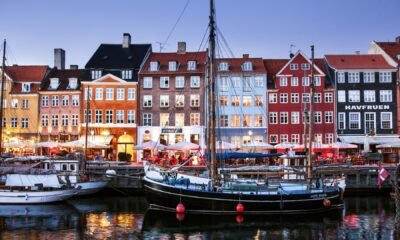

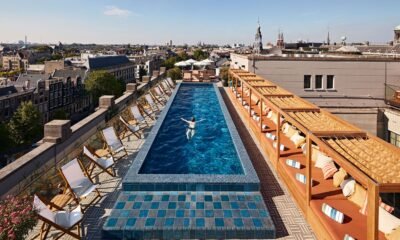

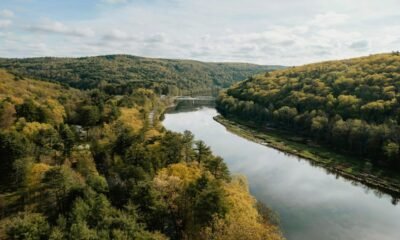





You must be logged in to post a comment Login